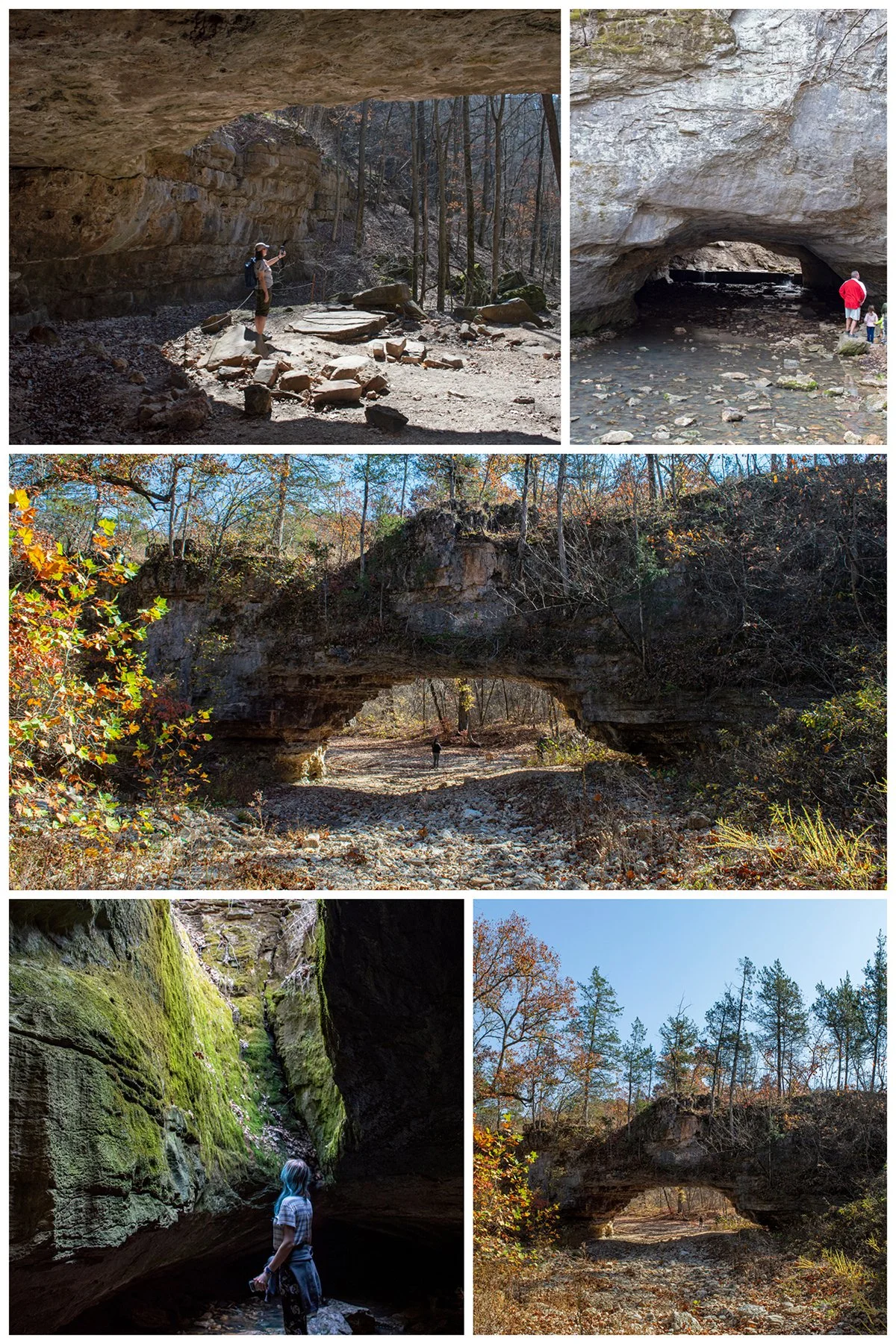Journey These Bridges to Adventure: Explore Missouri’s Natural Arches
Missouri’s karst topography results in erosion-carved natural bridges. Clockwise from the top left: Ha Ha Tonka State Park; Rock Bridge Memorial State Park; (center and lower-left images) Clifty Creek Conservation Area; Rock Bridge Memorial State Park.
The allure of natural bridges compels hikers.
There’s something about a natural stone bridge that intrigues us: It just shouldn’t be!
How long has it been there? How was it created?
And, more importantly for hikers, what’s on the other side? Can I get a view from the top?
Missouri’s karst topography makes these landforms fairly common. The forces of nature – particularly water – wash away softer stone and leave a bridge behind. This article isn’t a comprehensive listing of natural arches, but lists three prominent ones that can be accessed via a daytrip or weekender from the Kansas City Area. Carpe diem!
Rock Bridge Memorial State Park, Columbia, Mo.
This state park’s rock bridge is its central and most popular feature. But there’s much more to explore in its 2,000 acres. In fact, there are 27 miles of hiking trails, including the secluded Gans Creek Natural Area.
Ha Ha Tonka State Park
The popular natural bridge at this state park forms the entrance to a stunning canyon known as the Colosseum. It’s a former cave, now a sinkhole, that has a unique biome. The bridge is 70-feet wide and rises more than 100 feet from its base. Legends say this area was used for Native American ceremonies and church meetings. Beyond the bridge are many stunning topographical features, miles of trails and a massive spring that flows into Lake of the Ozarks.
Remote Clifty Creek Conservation Area is home to a stunning natural bridge and more.
At this nearly 500-acre preserve, near Rolla, Mo., a moderately-difficult 2.5-mile loop leads hikers to a spectacular natural bridge. Beyond it lie rugged, forested areas featuring cliffs, rock outcroppings, overhangs and sandstone glades.



